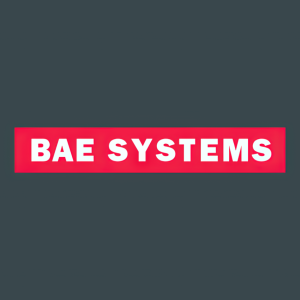Insights on the Air Defense Systems Global Market to 2027 - Increasing Geopolitical Instabilities and Cross-Border Conflicts Drive Growth
Rhea-AI Summary
The global air defense systems market was valued at
This growth is driven by factors such as increasing geopolitical instabilities, territorial disputes, and the demand for modernized defense technologies. Companies are enhancing air defense capabilities with advanced systems capable of countering airborne threats.
Notable players in the market include BAE Systems (BAESY), Raytheon Technologies, and Lockheed Martin. The report highlights the market dynamics, competitive landscape, and future outlook, underscoring the importance of air defense systems in contemporary military operations.
Positive
- Market projected to grow from US$ 42.37 billion in 2021 to US$ 57.86 billion by 2027.
- CAGR of 5.33% indicates significant growth potential.
- Increasing military budgets and modernization efforts by governments are beneficial for market expansion.
- Development of advanced technologies such as MANPADs and multi-location radars enhances market outlook.
Negative
- None.
News Market Reaction 1 Alert
On the day this news was published, BAESY declined 0.08%, reflecting a mild negative market reaction.
Data tracked by StockTitan Argus on the day of publication.

The global air defense systems market size reached
Keeping in mind the uncertainties of COVID-19, we are continuously tracking and evaluating the direct as well as the indirect influence of the pandemic on different end use sectors. These insights are included in the report as a major market contributor.
Air defense systems are used for detecting, intercepting, tracking, attacking, and destroying enemy aircraft or ballistic missiles. They help nullify incoming targets and protect army bases, land-based fixed assets, and mobile platforms from combat aircraft, unmanned air vehicles (UAVs), guided munition, and rockets.
They are equipped with electro-optic sensors and radars, which make them ideal for several air space surveillance operations. As a result, various leading companies across the globe are focusing on the advancement of air defense systems to protect the homeland with a modern and never-fail weapon system and resist evolving ballistic missile threats.
Air Defense Systems Market Trends:
The increasing geopolitical instabilities and cross-border conflicts, territorial disputes among nations, political insurgencies, and rising occurrences of aircraft warfare are among the major factors catalyzing the demand for efficient air defense systems. In addition, the rising need for upgrading old and outdated defense measures and technologies is driving the demand for advanced air defense systems.
Apart from this, initiatives undertaken by governments of various countries to modernize ground troop equipment, along with increasing military budgets, are strengthening the market growth. Furthermore, the development of advanced man-portable air-defense systems (MANPADs) for intercepting fixed- and rotary-wing aircraft is offering a favorable market outlook.
Additionally, manufacturers are focusing on adopting the latest software and digital technologies, like multi-location radars, power lasers, and missile warning systems, to enhance the performance and efficiency of the air defense systems for optimum protection against airborne threats. Moreover, surging investments by leading market players in research and development (R&D) activities to launch advanced, untraceable, autonomous, agile, and lethal weapons equipment are expected to propel the market growth.
Competitive Landscape:
The competitive landscape of the industry has also been examined along with the profiles of the key players being Aselsan A.S. (
Key Questions Answered in This Report:
- How has the global air defense systems market performed so far and how will it perform in the coming years?
- What has been the impact of COVID-19 on the global air defense systems market?
- What are the key regional markets?
- What is the breakup of the market based on the component?
- What is the breakup of the market based on the type?
- What is the breakup of the market based on the platform?
- What is the breakup of the market based on the range?
- What are the various stages in the value chain of the industry?
- What are the key driving factors and challenges in the industry?
- What is the structure of the global air defense systems market and who are the key players?
- What is the degree of competition in the industry?
Key Topics Covered:
1 Preface
2 Scope and Methodology
3 Executive Summary
4 Introduction
4.1 Overview
4.2 Key Industry Trends
5 Global Air Defense Systems Market
5.1 Market Overview
5.2 Market Performance
5.3 Impact of COVID-19
5.4 Market Forecast
6 Market Breakup by Component
6.1 Weapon System
6.1.1 Market Trends
6.1.2 Market Forecast
6.2 Fire Control System
6.2.1 Market Trends
6.2.2 Market Forecast
6.3 Command and Control System
6.3.1 Market Trends
6.3.2 Market Forecast
6.4 Others
6.4.1 Market Trends
6.4.2 Market Forecast
7 Market Breakup by Type
7.1 Missile Defense Systems
7.1.1 Market Trends
7.1.2 Market Forecast
7.2 Anti-aircraft Systems
7.2.1 Market Trends
7.2.2 Market Forecast
7.3 Counter Unmanned Aerial Systems (C-UAS)
7.3.1 Market Trends
7.3.2 Market Forecast
7.4 Counter Rocket, Artillery and Mortar (C-RAM) Systems
7.4.1 Market Trends
7.4.2 Market Forecast
8 Market Breakup by Platform
8.1 Airborne
8.1.1 Market Trends
8.1.2 Market Forecast
8.2 Land
8.2.1 Market Trends
8.2.2 Market Forecast
8.3 Naval
8.3.1 Market Trends
8.3.2 Market Forecast
9 Market Breakup by Range
9.1 Long-range Air Defense System (LRAD)
9.1.1 Market Trends
9.1.2 Market Forecast
9.2 Medium-range Air Defense System (MRAD)
9.2.1 Market Trends
9.2.2 Market Forecast
9.3 Short-range Air Defense System (SHORAD)
9.3.1 Market Trends
9.3.2 Market Forecast
10 Market Breakup by Region
11 SWOT Analysis
12 Value Chain Analysis
13 Porters Five Forces Analysis
14 Price Analysis
15 Competitive Landscape
15.1 Market Structure
15.2 Key Players
15.3 Profiles of Key Players
15.3.1 Aselsan A.S. (
15.3.1.1 Company Overview
15.3.1.2 Product Portfolio
15.3.1.3 Financials
15.3.2
15.3.2.1 Company Overview
15.3.2.2 Product Portfolio
15.3.2.3 Financials
15.3.2.4 SWOT Analysis
15.3.3
15.3.3.1 Company Overview
15.3.3.2 Product Portfolio
15.3.3.3 Financials
15.3.3.4 SWOT Analysis
15.3.4
15.3.4.1 Company Overview
15.3.4.2 Product Portfolio
15.3.5 Kongsberg Gruppen ASA
15.3.5.1 Company Overview
15.3.5.2 Product Portfolio
15.3.5.3 Financials
15.3.6 Leonardo S.p.A.
15.3.6.1 Company Overview
15.3.6.2 Product Portfolio
15.3.6.3 Financials
15.3.6.4 SWOT Analysis
15.3.7 Lockheed Martin Corporation
15.3.7.1 Company Overview
15.3.7.2 Product Portfolio
15.3.7.3 Financials
15.3.7.4 SWOT Analysis
15.3.8 Northrop Grumman Corporation
15.3.8.1 Company Overview
15.3.8.2 Product Portfolio
15.3.8.3 Financials
15.3.8.4 SWOT Analysis
15.3.9 Raytheon Technologies Corporation
15.3.9.1 Company Overview
15.3.9.2 Product Portfolio
15.3.9.3 Financials
15.3.9.4 SWOT Analysis
15.3.10.1 Company Overview
15.3.10.2 Product Portfolio
15.3.10.3 Financials
15.3.11.1 Company Overview
15.3.11.2 Product Portfolio
15.3.11.3 Financials
15.3.11.4 SWOT Analysis
15.3.12.1 Company Overview
15.3.12.2 Product Portfolio
15.3.12.3 Financials
15.3.12.4 SWOT Analysis
15.3.13.1 Company Overview
15.3.13.2 Product Portfolio
15.3.13.3 Financials
15.3.13.4 SWOT Analysis
For more information about this report visit https://www.researchandmarkets.com/r/hbc60e
Media Contact:
Research and Markets
press@researchandmarkets.com
For E.S.T Office Hours Call +1-917-300-0470
For
For GMT Office Hours Call +353-1-416-8900
Fax (outside
Logo: http://mma.prnewswire.com/media/539438/Research_and_Markets_Logo.jpg
![]() View original content:https://www.prnewswire.com/news-releases/insights-on-the-air-defense-systems-global-market-to-2027---increasing-geopolitical-instabilities-and-cross-border-conflicts-drive-growth-301727976.html
View original content:https://www.prnewswire.com/news-releases/insights-on-the-air-defense-systems-global-market-to-2027---increasing-geopolitical-instabilities-and-cross-border-conflicts-drive-growth-301727976.html
SOURCE







